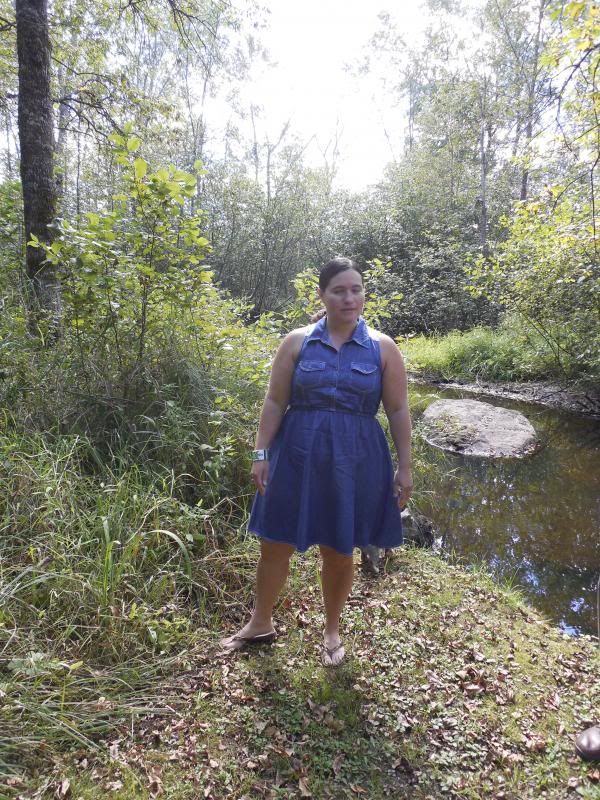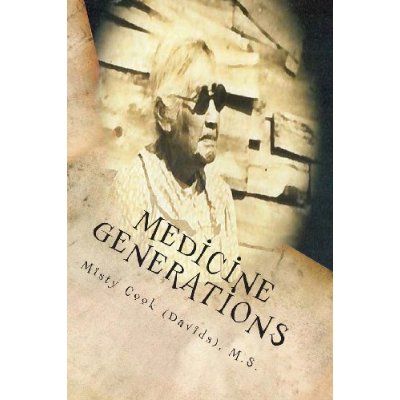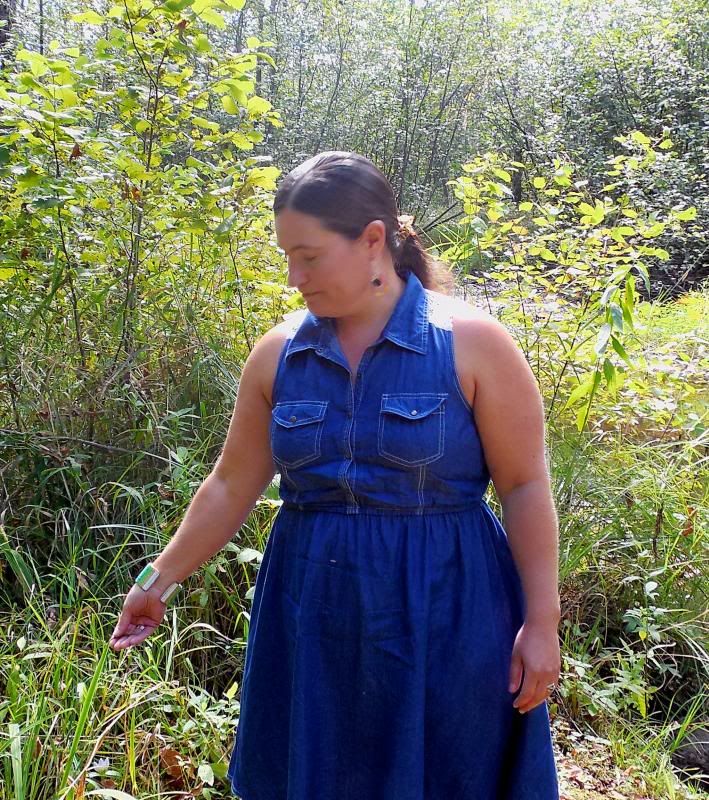Much
of the area around Gresham in Shawano County is farmed but here and there are
pockets of undisturbed woodland. Roads
wind in and out of stands of oak, pine, hemlock, maple, linden, and ash and on
the forest floor grow a rich variety of understory plants. Misty Cook, author of Medicine Generations, lives with her family in a log house nestled
by a brook in these woods.
Her people, the Stockbridge-Munsee band of Mohicans, have lived in this
part of Wisconsin since the 1850s. Their
journey to Wisconsin was long and consisted of what the tribe calls “many
trails”: all the different places they
lived after being forcibly removed from their original home along the Hudson
River in New York state. Eventually,
they arrived in Wisconsin, first settling on land reserved for them on the east
side of Lake Winnebago but as that land became flooded with non-Indian
squatters, the United States government moved the tribe to two townships
annexed from the Menominee Reservation.
 It wasn’t until about the time that her daughter was born that Cook
began to take a serious interest in the natural medicines traditional to the
Stockbridge-Munsee. She had grown up watching her grandmother, Mary Burr use these medicines; her family had always
lived around Cook’s cousin, the herbalist Dave Besaw. People stopped him at the market or the gas
station or the post office to ask advice about aching bones or a persistent
cough or anxiety or any one of a hundred common complaints. “Many
of the medicinal plants were known to my people but I hadn’t taken an active
interest in learning them,” Cook explained.
“I already knew a few of them, like Wild Bergamot or Bee Balm as it's
known at the commercial garden center. We also call it #6, it’s that commonly used. #6 is like aspirin so it’s good for many kinds
of cold, flu, symptoms of fever.” She
made a sweeping gesture of her hand. “ You can find it all through here. “
It wasn’t until about the time that her daughter was born that Cook
began to take a serious interest in the natural medicines traditional to the
Stockbridge-Munsee. She had grown up watching her grandmother, Mary Burr use these medicines; her family had always
lived around Cook’s cousin, the herbalist Dave Besaw. People stopped him at the market or the gas
station or the post office to ask advice about aching bones or a persistent
cough or anxiety or any one of a hundred common complaints. “Many
of the medicinal plants were known to my people but I hadn’t taken an active
interest in learning them,” Cook explained.
“I already knew a few of them, like Wild Bergamot or Bee Balm as it's
known at the commercial garden center. We also call it #6, it’s that commonly used. #6 is like aspirin so it’s good for many kinds
of cold, flu, symptoms of fever.” She
made a sweeping gesture of her hand. “ You can find it all through here. “
After earning a master’s degree in management from the University of
Wisconsin – Green Bay, Cook worked as Director of Education for the Stockbridge-Munsee. She
began to ask Besaw to show her the medicines he gathered from the woods and
fields and stored in jars and hung in bunches from rafters to dry. Besaw’s knowledge came from his mother Ella
Gardner and her knowledge came from her great- grandmother Granny Gardner. “It’s seven generations from Granny Gardner
to myself. Granny Gardner lived to be
106,” Cook said. “Her name was Jeanette
Skenandore and she came to Wisconsin from New York State when she was eight
years old. She was an Oneida who married
a Stockbridge so she lived with them after their last move from their reserved
lands near the village of Stockbridge to the town of Red Springs near
Gresham. Granny Gardner died in 1936.”
In the early spring, they collected the
little white Blood Root Flower for its red stem that helps staunch bleeding. In the fields, they found the tall, droopy milkweed
for the stem milk that dries up warts.
As summer came on, they gathered and dried red raspberry leaves for a tea
to lower blood sugar levels. Colt’s Foot they found all over the
reservation. The white roots, washed,
boiled, and strained they made into a salve to promote hair growth and the
hoof-shaped leaves with their white wooly underside and smooth, dark-green
upper they steeped for a hair and scalp treatment. Even in sandy or gravely driveways medicinal
plants grew. Cook learned how to preserve and prepare what
she and Besaw gathered.
She became expert enough to help Besaw in using the medicines to treat
people. Now she was becoming Besaw's assistant and helped with a presentation on their family’s knowledge of
traditional medicines. Soon after the
presentation, Besaw died; Cook didn’t
feel ready to end the apprenticeship. “Everything
fell into place, even though Dave died too soon,” she said. “I had no idea I would be doing this and
writing this book but everything has led up to it. My people try to keep a balance of the
mental, emotional, spiritual, and physical sides of life through the proper use
of these medicines. That was an
important part of Dave’s work. The
medicines are part of our culture. These
medicines are tried and true down through generations and generations. Now I teach others about them.”
 Her book, Medicine Generations,
documents 58 herbal medicines traditional to the Stockbridge-Munsee. Cook describes where, when, and how to gather
the right leaves, stems, flowers, roots, and bark and the preservation,
preparation and use of the teas, salves, and poultices. Each plant has a photograph for identification
and is called by its common name and many of the Munsee dialect names. “I wanted to collect the knowledge in one
place,” Cook said. “The book is a
tribute to Dave and our family, to those who came before us. The medicines are part of our oral
tradition. Doctoring in the Native
tradition did not require money. My
people have these rich traditions. The
book is a way of passing this knowledge to my daughter and my community and to
those who come after us. “
Her book, Medicine Generations,
documents 58 herbal medicines traditional to the Stockbridge-Munsee. Cook describes where, when, and how to gather
the right leaves, stems, flowers, roots, and bark and the preservation,
preparation and use of the teas, salves, and poultices. Each plant has a photograph for identification
and is called by its common name and many of the Munsee dialect names. “I wanted to collect the knowledge in one
place,” Cook said. “The book is a
tribute to Dave and our family, to those who came before us. The medicines are part of our oral
tradition. Doctoring in the Native
tradition did not require money. My
people have these rich traditions. The
book is a way of passing this knowledge to my daughter and my community and to
those who come after us. “
Misty Cook can be contacted at niconishkawah@yahoo.com Medicine Generations can be ordered at www.createspace.com/4208715

No comments:
Post a Comment